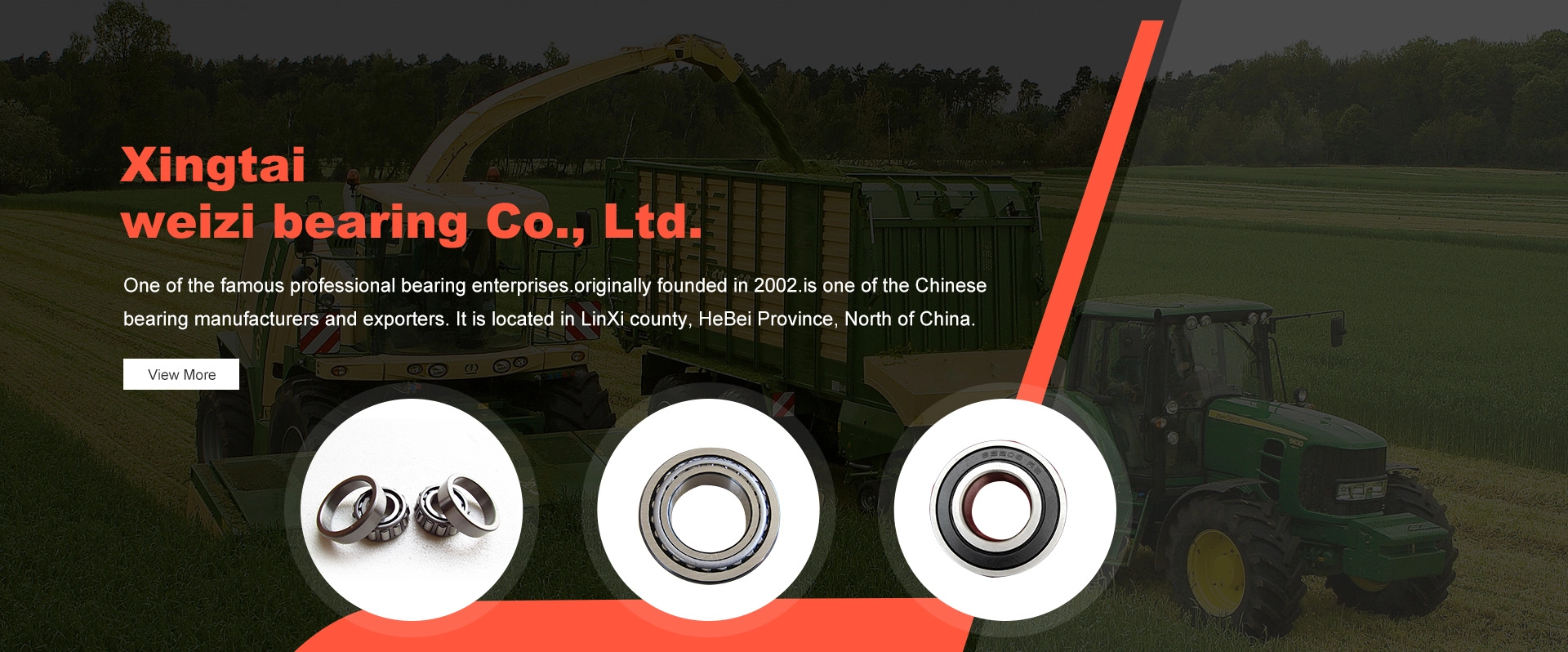
नोभ . 06, 2024 01:51 Back to list
Understanding Angular Contact Ball Bearings and Their Applications in Machinery
What is Angular Contact Ball Bearing?
Angular contact ball bearings are a specific type of rolling-element bearing designed to sustain both axial and radial loads. They are characterized by their ability to accommodate angular misalignment, making them ideal for high-speed applications where precision and durability are paramount. This article explores the design, applications, advantages, and considerations surrounding angular contact ball bearings.
Design of Angular Contact Ball Bearings
Angular contact ball bearings consist of an inner ring, an outer ring, and a set of balls that are positioned between them. The inner and outer rings are shaped to form a contact angle, which is the angle between the line connecting the centers of the balls and the line perpendicular to the raceway. This design configuration allows them to handle loads that are not purely radial; instead, they can manage a combination of radial and axial loads simultaneously.
The contact angle is a critical factor in the bearing's performance. Angular contact bearings come in various contact angles, typically ranging from 15° to 40°. A larger contact angle typically enables the bearing to handle heavier axial loads but may reduce its speed capability. Therefore, the choice of contact angle is essential, depending on the specific application requirements.
Applications of Angular Contact Ball Bearings
Due to their unique design, angular contact ball bearings are utilized in a variety of high-performance applications across multiple industries. Some common applications include
1. Machine Tool Spindles These bearings provide high precision and the ability to handle heavy axial loads, critical for maintaining accuracy in machining processes. 2. Electric Motors In electric motors, angular contact bearings contribute to efficient power transmission and can handle both radial and axial forces arising from the rotor's rotation.
3. Automotive Applications These bearings are widely employed in automotive components like gearboxes and wheel hubs, where they help manage loads during various driving conditions.
4. Aerospace Their ability to withstand extreme conditions and hold precise tolerances makes angular contact ball bearings indispensable in aircraft engines and landing gear.
5. Pumps and Compressors The bearings support rotating shafts, providing stability and efficiency in fluid dynamics.
Advantages of Angular Contact Ball Bearings
Angular contact ball bearings offer several advantages that make them a preferred choice in many engineering applications
what is angular contact ball bearing

- High Load Capacity They can withstand substantial radial and axial loads, which makes them suitable for applications with dynamic forces
.- Precision Performance The design allows for reduced friction and improved accuracy, essential for high-speed machinery.
- Versatility Angular contact ball bearings come in various sizes and configurations, making them adaptable to many different machines and components.
- Long Service Life High-quality materials and design can lead to increased durability and reliability, reducing the need for frequent replacements and maintenance.
Considerations When Choosing Angular Contact Ball Bearings
When selecting angular contact ball bearings for a specific application, several factors must be considered
- Load Ratings Understanding the load requirements is crucial. Engineers must calculate the combined radial and axial loads the bearing will be subjected to.
- Speed Rating The maximum rotational speed is essential, as a bearing not designed for high speeds may experience premature failure.
- Lubrication Proper lubrication is critical for reducing wear and heat generation. Users have to choose between grease and oil lubricants based on operational conditions.
- Installation Angular contact ball bearings need precise installation to ensure correct alignment and optimal performance. Misalignment can lead to reduced load capacity and bearing life.
Conclusion
Angular contact ball bearings stand out as a vital component in many high-performance applications due to their unique design and ability to handle combined loads. Understanding their characteristics, advantages, and appropriate usage is crucial for engineers and designers to harness their full potential. As industries continue to evolve and demand higher efficiency and performance, the role of angular contact ball bearings will undoubtedly remain significant in mechanical engineering.
Latest news
-
Types of Machinery Bearings and Their Applications
NewsMay.26,2025
-
Thrust Ball Bearings: Key Features and Applications
NewsMay.26,2025
-
Key Advantages of Angular Contact Ball Bearings in Precision Applications
NewsMay.26,2025
-
Common Applications of Cylindrical Roller Bearings in Industry
NewsMay.26,2025
-
Basic Structure & Function of Taper Roller Bearings
NewsMay.26,2025
-
Advantages of Spherical Roller Bearings in Heavy Machinery
NewsMay.26,2025
